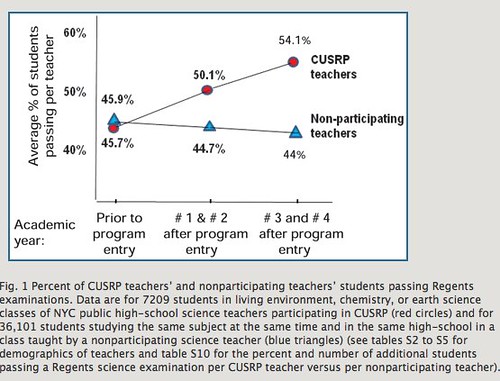Well, duh. Or at any rate that’s the common reaction I’ve picked up among teachers doing research over the past ten years. If you view science education as inviting students into science, then without doing research the science teacher is in the position of inviting their students to dinner at someone else’s home, in effect. Once teachers feel fully part of a research-centric science community, they are in a better position to invite students into their own home.
How do you quantify that intuition…how do you measure student the extent to which students have been effectively invited into science (or more broadly into STEM community)? That’s a difficult question. But if you identify student achievement in science with their scores on science tests, the measurement task gets easier. A recent report in Science Magazine–“Teachers’ Participation in Research Programs Improves Their Students’ Achievement in Science”–tells of a study conducted on a teacher research program at Columbia University suggesting that research experiences enhance “teachers’ skills in communicating science to students.” Students whose teachers participated in Columbia’s 2-year research program (about 7000 students from 32 study-eligible teachers) scored about 10% higher on the NY State Regents’ science exam than did students at the same schools who studied the same subjects with teachers who did not participate (about 36,000 students of 145 nonparticipating teachers.) Here is the key graphic, hyperlinked to the article:
Students may become better science test takers as a result of their teachers’ enhanced skills at “communicating science”, and perhaps teachers participating in research programs like the one at Columbia are better equipped with such skills. Whether those students have been issued more effective invitations to STEM community seems an open question, still.


